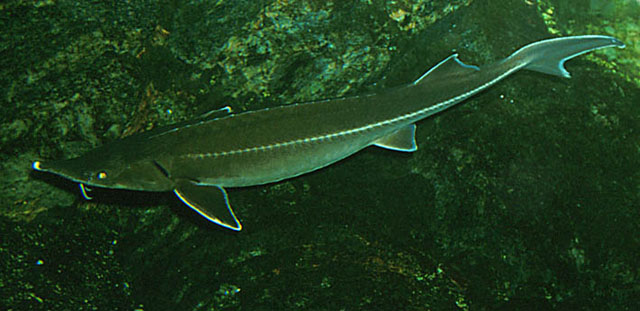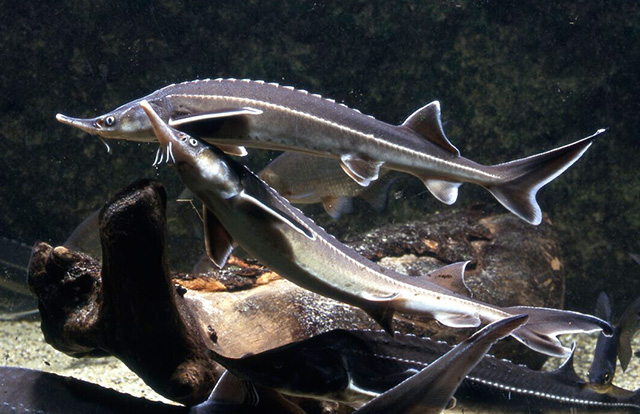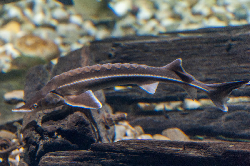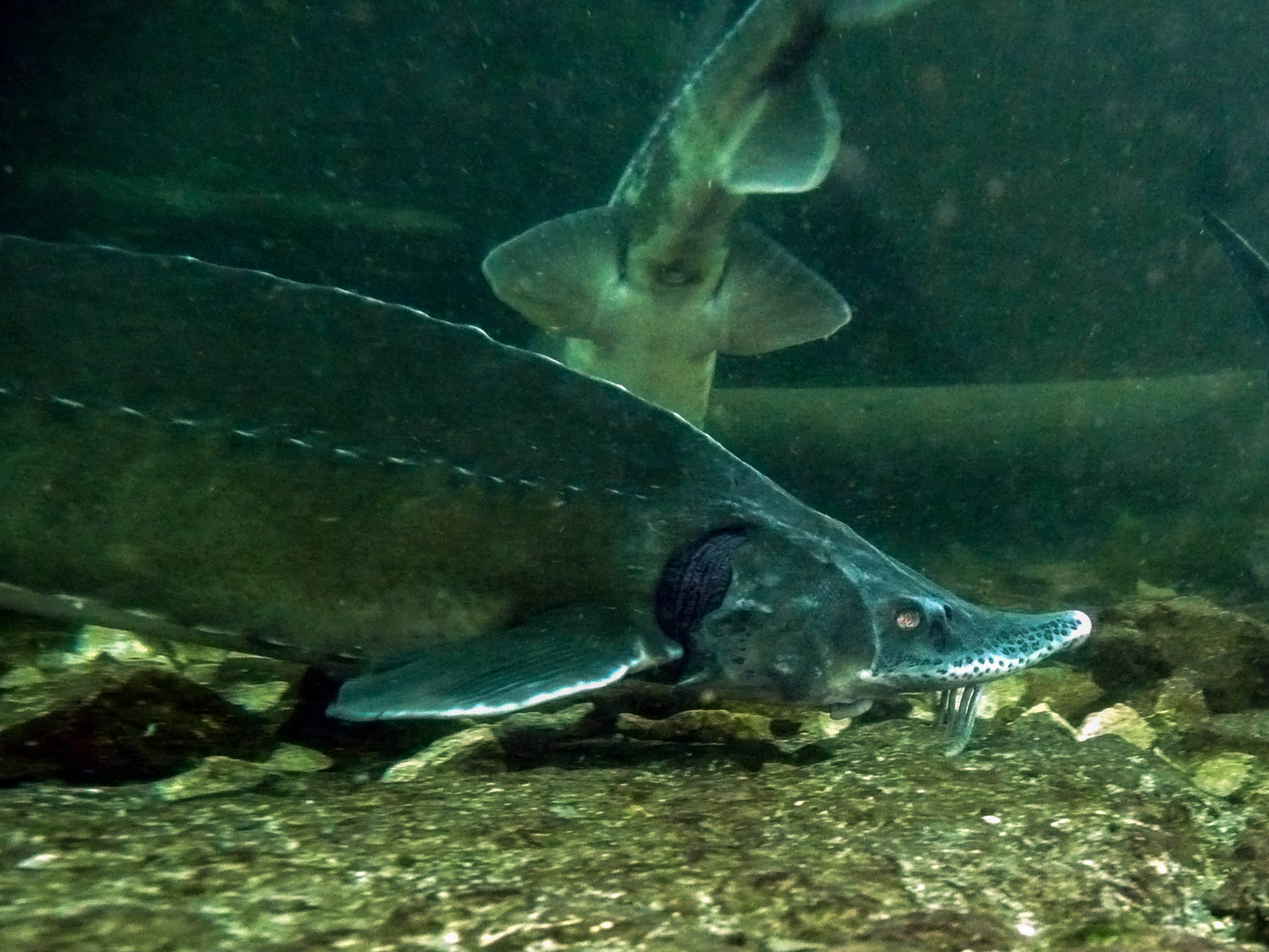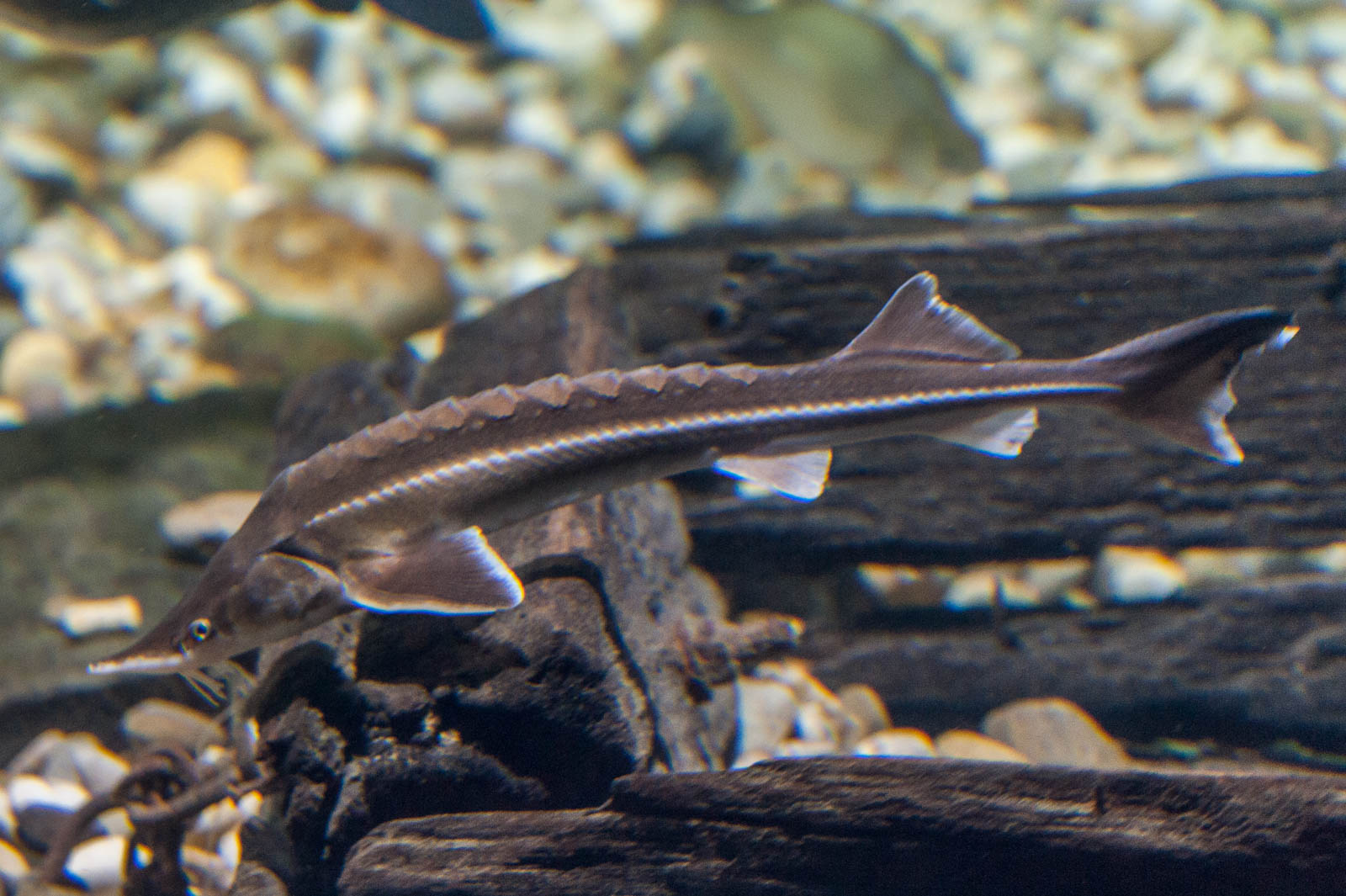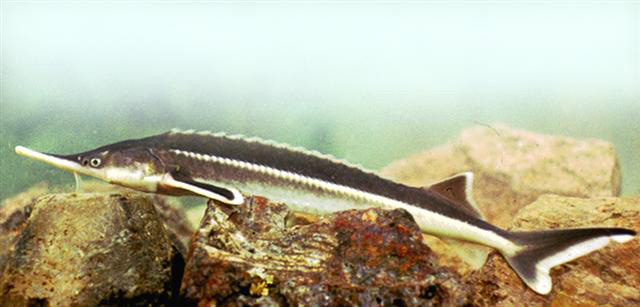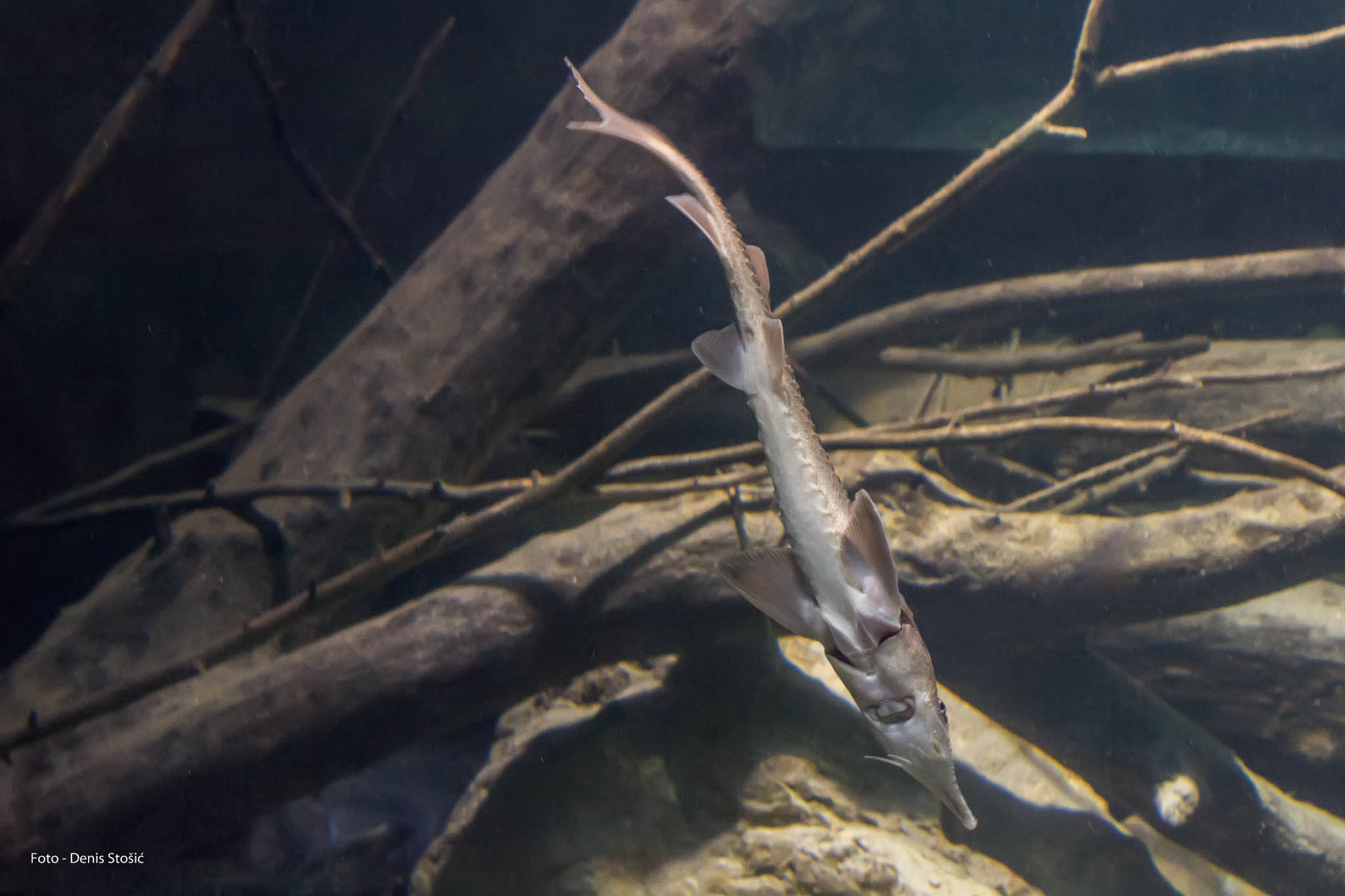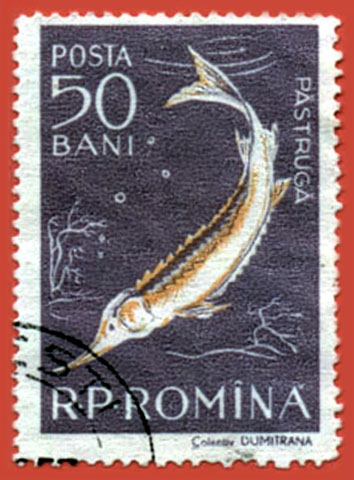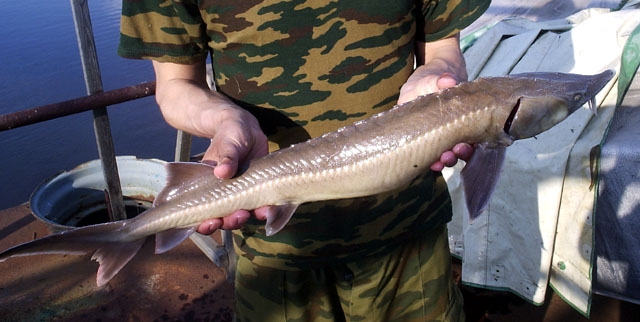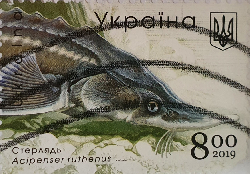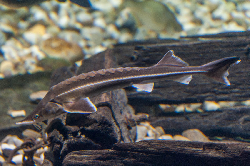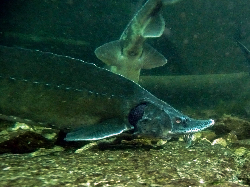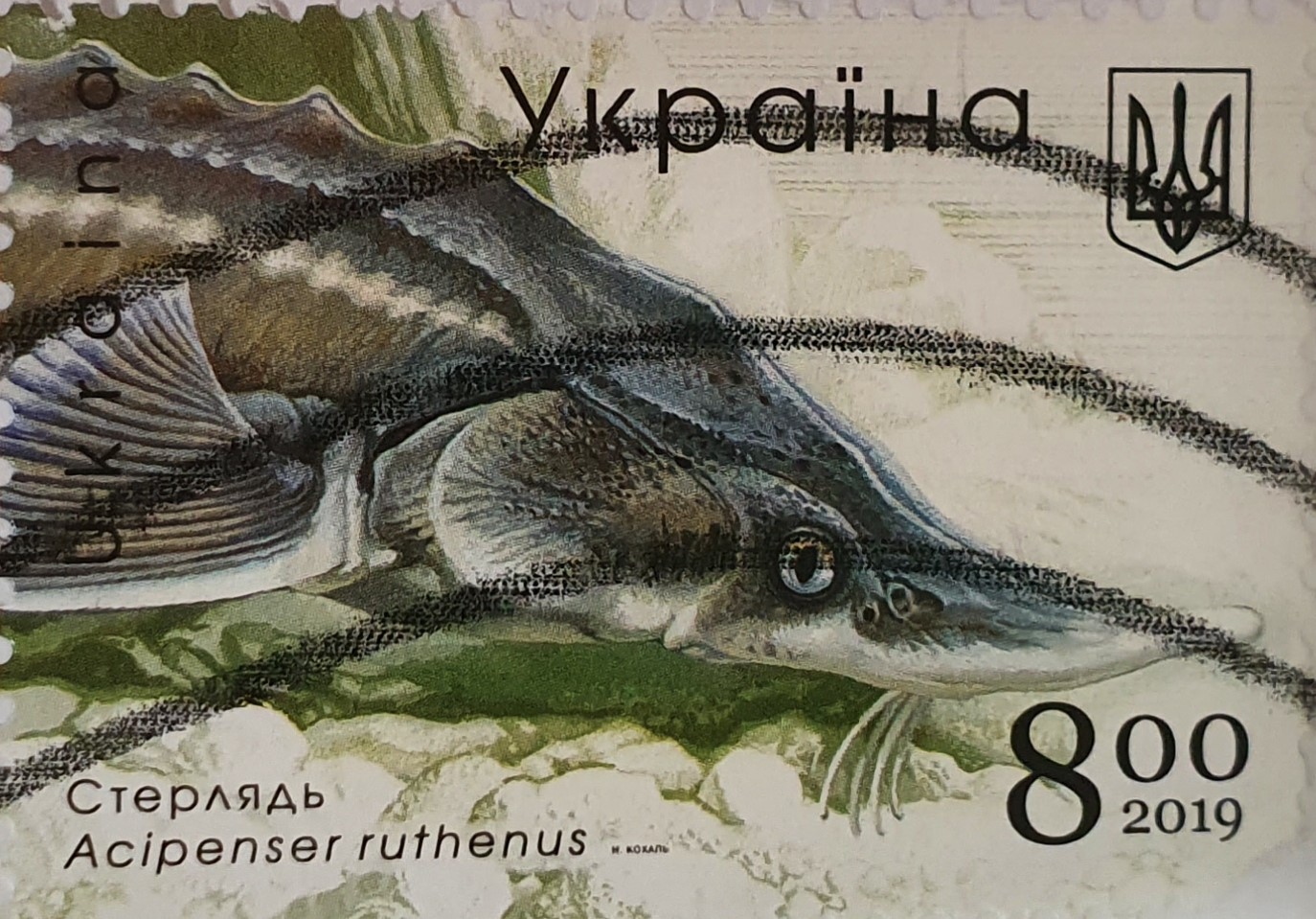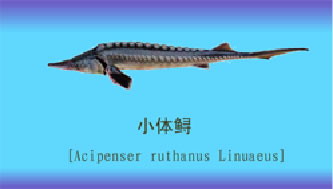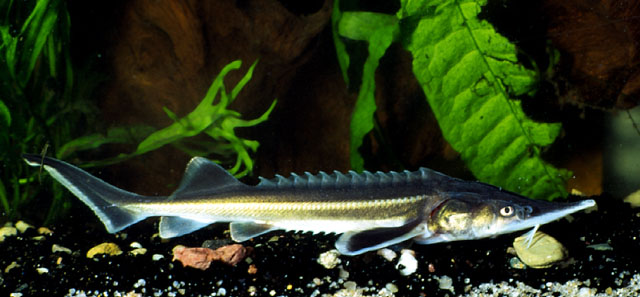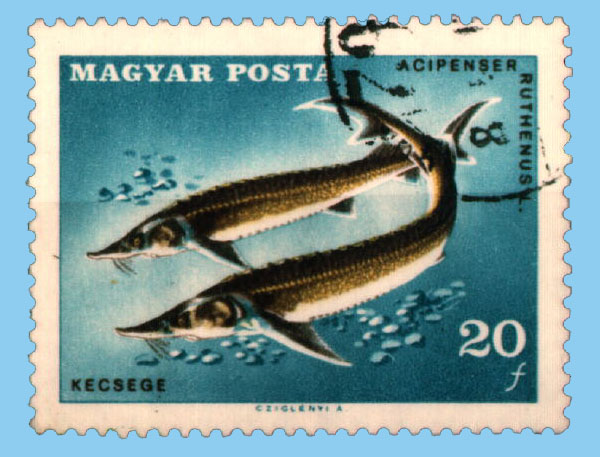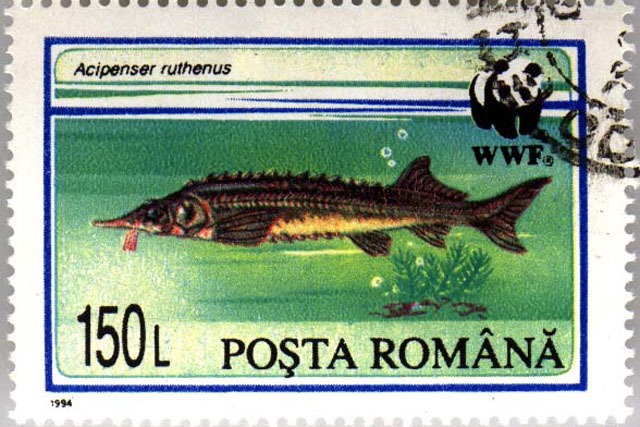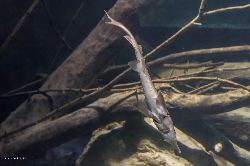Acipenser ruthenus Linnaeus, 1758
Description
Dorsal spines (total): 13; Dorsal soft rays (total): 28; Anal spines: 9; Anal soft rays: 14 - 18. Back and flanks are beige. Five rows of scutes : 12-17D, 57-71L, 10-19V. Ventrals and laterals are very light-colored, nearly white. Narrow and pointed snout with four long and fringed barbels. Inferior lip clearly slit (Ref. 40476). Can be diagnosed from congeners in Europe by having 56-71 lateral scutes, first dorsal scute not fused with head, barbels fimbriate, lower lip interrupted in middle and 11-27 gill rakers (Ref. 59043).
Common Names
No common names available.
Taxonomic Hierarchy
Kingdom: Animalia
Phylum: Chordata
Class: Chondrostei
Order: Acipenseriformes
Family: Acipenseridae
Genus: Acipenser
Species: Acipenser ruthenus Linnaeus, 1758
Climate Zone
Location
Biology
A fluvial fish which inhabits rivers and their tributaries (Ref. 9696). Occurs in large rivers, usually in the current and in deep water. Moves to flooded areas to feed (Ref. 59043). Chiefly potamodromous (Ref. 58897). Like other sturgeons, it aggregates in bottom holes in winter and exhibits little activity. In spring, when ice breaks, it rises from the bottom holes and moves upstream for spawning (Ref. 593). Spawns in habitats with strong-current on gravel, rarely on gravel-sand bottom or in flooded sites. Juveniles stay in riverine habitats during their first summer. Classified as endangered species. Anadromous populations are now extirpated; local populations are still surviving in most parts of range (Ref. 59043).
Habitat
brackish
